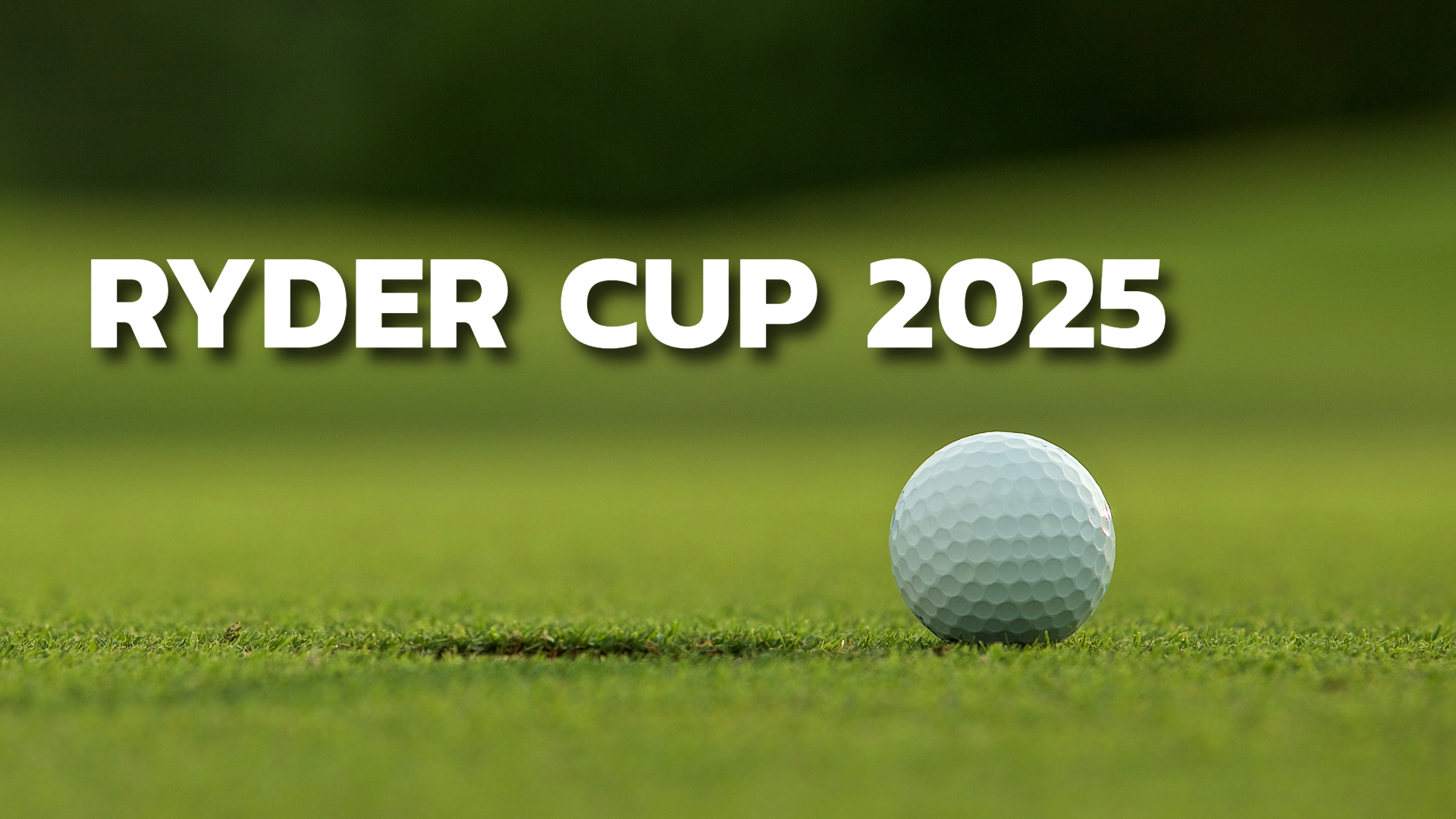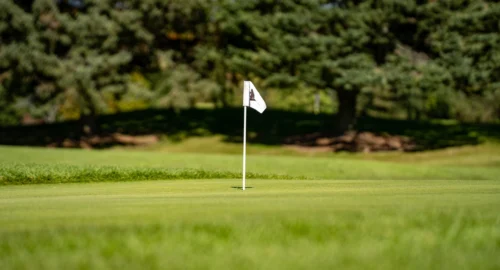
If you turned off this year’s Ryder Cup because the score looked lopsided, you missed out on tons of excitement and action.
Regardless of which side you were pulling for, this year’s cup at Bethpage Black hosted some of the best golf we’ll see all year. From chip-ins to hole-outs to long-range putts, the 2025 Ryder Cup reminded us why this event is unlike anything else in golf.
What looked like a European runaway turned into a Sunday filled with drama, tension, and momentum swings that left fans on the edge of their seats.
Ryder Cup History: What You Need to Know
For anyone new to the Ryder Cup, it’s worth understanding why this event stands alone. The Ryder Cup is held every two years between the United States and Europe in a match-play format.
Unlike regular tournaments, where the lowest total score wins, the Ryder Cup is about head-to-head battles. We get to see some of our favorite (and least favorite) players pair up.
Here are a few quick facts to know about the Ryder Cup:
- Format: 28 total matches (foursomes, fourballs, singles). First team to 14½ wins, 14 retains.
- Teams: United States vs. Europe (originally Great Britain vs. the U.S. until 1979).
- Prize Money: None. Players compete for pride, legacy, and country.
- Frequency: Every two years, alternating between U.S. and European venues.
- 2025 Edition: The 45th Ryder Cup, held at Bethpage Black in Farmingdale, NY.
This year, Europe claimed its first away win since 2012, beating the U.S. 15–13.
Expectations Heading In
The U.S. had its advantages heading into the Ryder Cup. They had the home crowd, familiarity with Bethpage Black, and a roster stacked with length and talent. But Europe’s side carried something the U.S. has struggled to match in recent years: chemistry.
The European team leaned on proven veterans.
Rory McIlroy was once again the emotional centerpiece. Tommy Fleetwood brought consistency and versatility. Jon Rahm, one of the fiercest match-play competitors in history, anchored the middle of the lineup. Add in emerging stars like Ludvig Åberg, and Europe had a balanced mix of experience and momentum.
Many analysts predicted a close battle. As we’d see, the format and the setup at Bethpage Black played a bigger role than anyone anticipated.
Bethpage Black: The Ultimate Test
Bethpage Black has long been known as one of the toughest public courses in the world. It’s long, and it even comes with a warning on the first tee box. Tight fairways framed by thick rough demand accuracy off the tee. The greens are well protected, requiring not just precise approaches but also a sharp short game.
The setup stretched over 7,400 yards, with several par 4s creeping past the 480- and 500-yard mark. For captains, that meant selecting players who could not only handle the length but also scramble when they missed.
The real surprise in the course setup at Bethpage was the green speeds. U.S. captain Keegan Bradley admitted afterward that the greens played softer and slower than expected. The Americans had prepared for fiery, fast surfaces that reward aggression.
Instead, they faced greens that demanded patience, spin, and touch.
The Matches: How It Played Out
Europe wasted no time asserting themselves. They came out strong in Friday’s foursomes and carried that energy into Saturday. By the time Saturday afternoon wrapped, Europe had built a 11½–4½ lead. For many casual fans, that was the moment to change the channel.
Those who stayed with it, or tuned back in Sunday, witnessed one of the more spirited comebacks in Ryder Cup history.
Sunday Singles: A U.S. Charge
Sunday began with unexpected drama. Viktor Hovland, one of Europe’s biggest stars, was forced to withdraw with a neck injury. Under Ryder Cup rules, his scheduled singles match was halved, giving both teams a half point. That brought Europe’s total to 12 before the matches even began.
The U.S. team, facing a massive deficit, came out swinging.
Cameron Young birdied the 18th to defeat Justin Rose and spark energy. Justin Thomas delivered on 18 as well, securing another point. Xander Schauffele stunned the crowd by beating Jon Rahm 4 & 3. Bryson DeChambeau clawed back from five down to halve his match against Matt Fitzpatrick.
Momentum was building, the crowd was alive, and suddenly what looked like a blowout was teetering on the edge of a historic comeback.
Here’s how the most decisive Sunday matches played out:
| Match | Result | Why It Mattered |
|---|---|---|
| Cameron Young vs. Justin Rose | Young wins 1 Up | Birdie at 18 gave U.S. momentum early. |
| Justin Thomas vs. Tyrrell Hatton | Thomas wins 1 Up | Kept U.S. hopes alive heading into middle matches. |
| Xander Schauffele vs. Jon Rahm | Schauffele wins 4 & 3 | Huge upset win against Europe’s anchor. |
| Bryson DeChambeau vs. Matt Fitzpatrick | Halved | Bryson clawed back from 5 down — half point critical to the U.S. surge. |
| Ludvig Åberg vs. Wyndham Clark | Åberg wins 3 & 2 | Europe’s only full win of the day. |
| Shane Lowry vs. Max Homa | Halved | Clutch putt on 18 delivered Europe the 14th point to retain the Cup. |
| Tyrrell Hatton vs. Collin Morikawa | Halved | The final match sealed the 15–13 victory for Europe. |
Despite the surge, Europe held firm where it mattered. Åberg’s win and Lowry’s clutch putt stopped the bleeding, and Hatton’s half-point sealed the deal.
The Hovland Withdrawal: Bigger Than Just a Half Point
Hovland’s withdrawal will be remembered as one of the biggest storylines of the week.
The use of the “envelope rule” is rare, and it reignited debate about whether the current system is the best way to handle late injuries. On one hand, it preserved fairness by awarding each side half a point. On the other, it robbed fans of a marquee singles matchup and shifted the narrative of the competition.
Lessons for Amateurs: What You Can Take Away
The Ryder Cup is a master class in handling pressure, managing a course, and adapting to conditions. Here are some takeaways you can apply to your own game:
Hit the fairway first
At Bethpage, missing fairways meant fighting thick rough and scrambling for par. For amateurs, the lesson is simple: don’t always chase distance. Tee it down, take more loft, or hit something like the 357 Fairway if accuracy is your top priority.
Respect the long par 4s
With multiple par 4s playing over 480 yards, players had to accept that par was a good score. As an amateur, know when to take your medicine. Lay up, avoid the big number, and give yourself a putt for par or bogey instead of compounding mistakes.
Short game saves rounds
Europe’s ability to get up and down was the difference maker. This is where tools like Performance Golf’s Stealth Spin Secrets training come in. You need shots around the green you can trust under pressure.
Adapt to green speeds
Keegan Bradley’s comments about soft greens tell the story. Amateurs face the same challenge: your touch has to travel. Learning to control spin and flight with clubs like The One Wedge is critical when greens don’t play as expected.
Build mental toughness
Sunday showed us how quickly momentum shifts in match play. The key is staying committed to every shot, even when the odds look bad. Practice putting yourself under pressure like needing three straight up-and-downs to simulate the Ryder Cup grind.
The Ryder Cup Roundup
The 2025 Ryder Cup at Bethpage Black had everything: early dominance, unexpected setbacks, a furious comeback, and clutch shots under the heaviest pressure. Europe’s 15–13 victory will be remembered for its mix of drama and grit, and for proving once again that the Ryder Cup produces moments no other tournament can match.
For everyday golfers, it’s a reminder that winning isn’t just about raw talent. It’s about strategy, adaptability, and composure. Whether you’re facing a narrow fairway, a tough lie, or a three-footer to win your weekend match, the lessons from Bethpage apply to your game, too.

